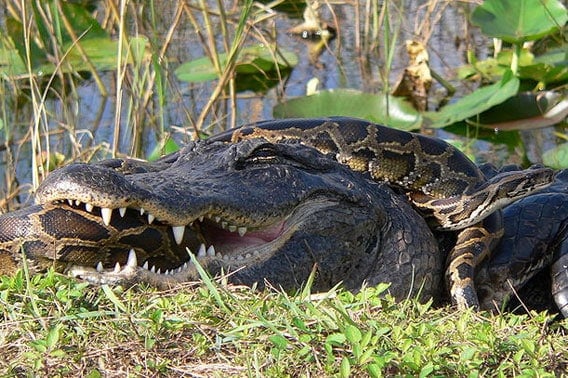In a shocking display of nature’s raw power, a Burmese python was seen decimating a massive alligator in Florida’s Everglades. This dramatic encounter underscores the significant impact invasive Burmese pythons have had on the local ecosystem.
The Encounter Between Python and Alligator

An American alligator and a Burmese python were observed locked in a fierce struggle in Everglades National Park. The Burmese python, a non-native species, displayed its formidable predatory capabilities by overpowering the alligator, highlighting the ongoing ecological battle in the park.
Invasive Species in the Everglades

Burmese pythons, native to Southeast Asia, have become a major invasive species in the Everglades. They were likely introduced into the wild by pet owners who could no longer manage their large size.
The Scale of Python Invasion
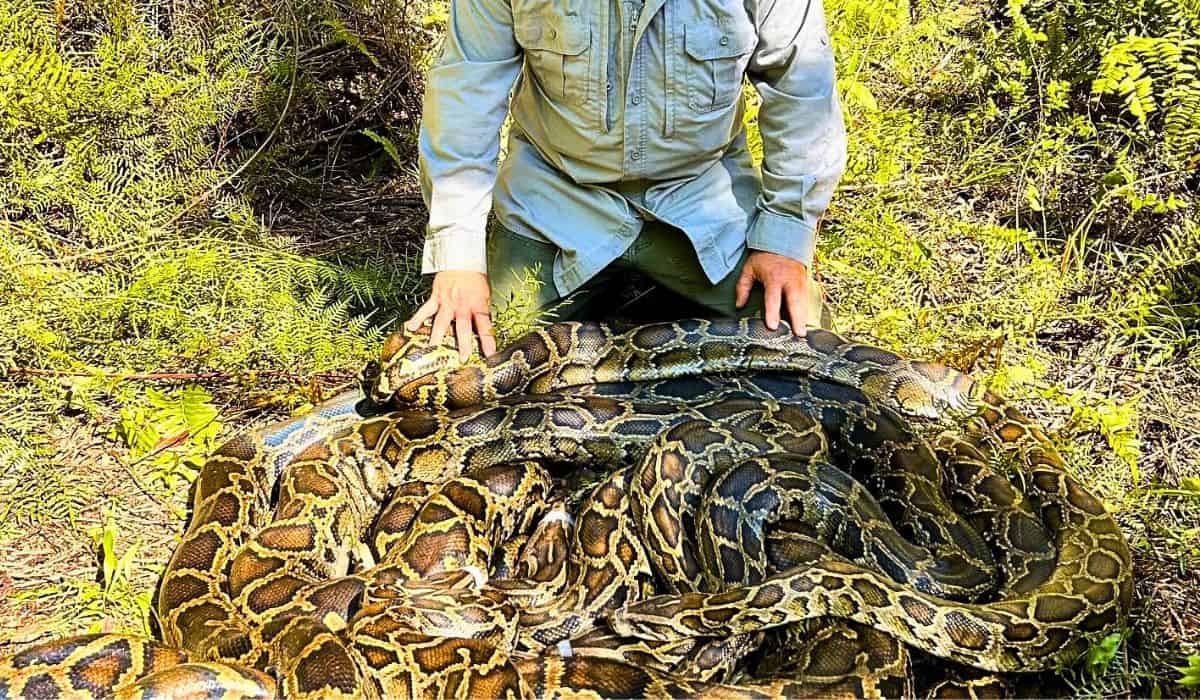
Burmese pythons have established themselves across thousands of square kilometers in southern Florida, including all of Everglades National Park. These large constrictors pose a significant threat to native wildlife due to their adaptability and voracious appetite.
Impact on Mammal Populations
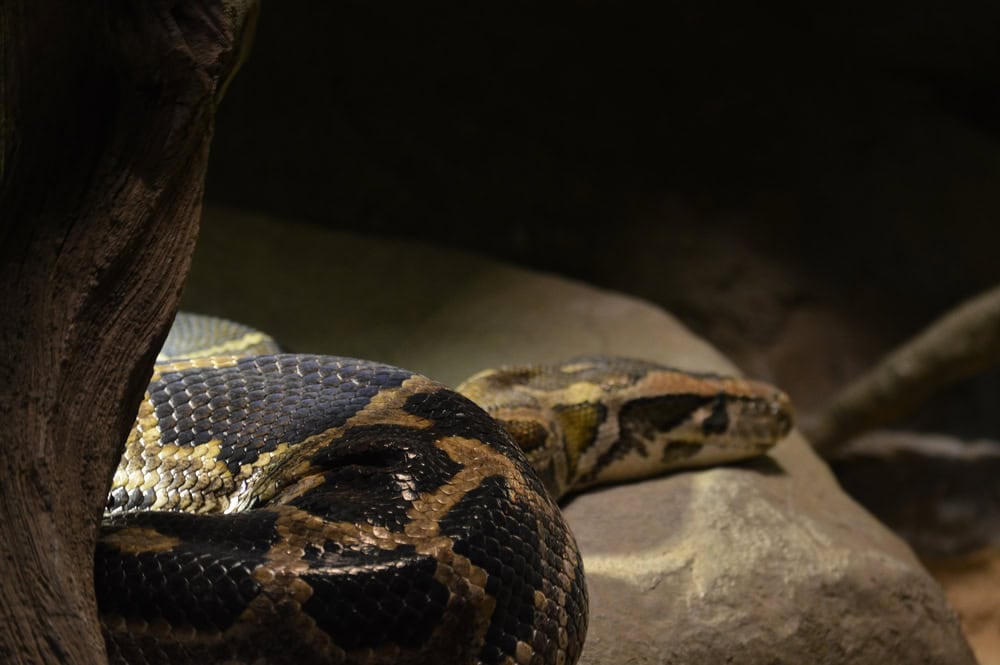
Research has shown a dramatic decline in mammal populations in areas heavily infiltrated by Burmese pythons. Species such as bobcats, white-tailed deer, Virginia opossums, raccoons, and rabbits have seen significant reductions in sightings.
Alligator as Prey
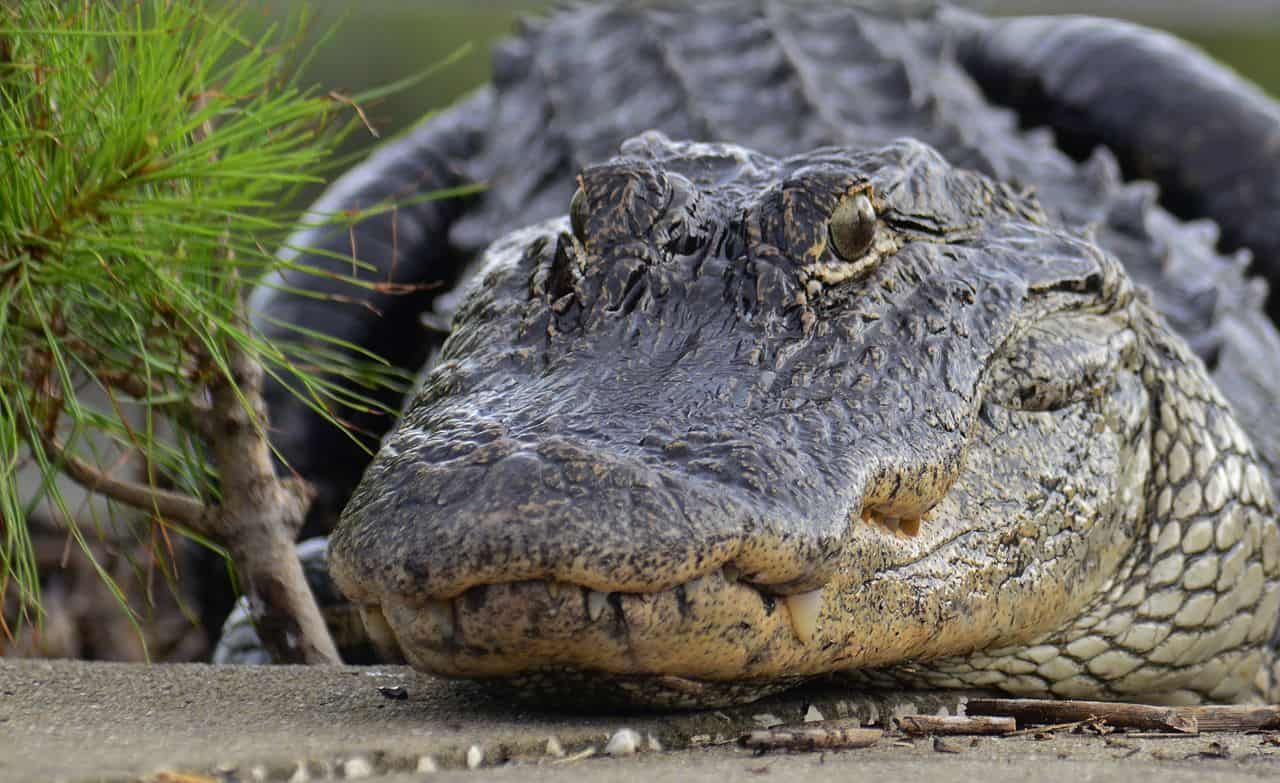
The incident involving the alligator demonstrates that Burmese pythons can and do prey on large native species. This predation can disrupt local food chains and pose a threat to apex predators like the American alligator.
Evidence of Ecological Shifts
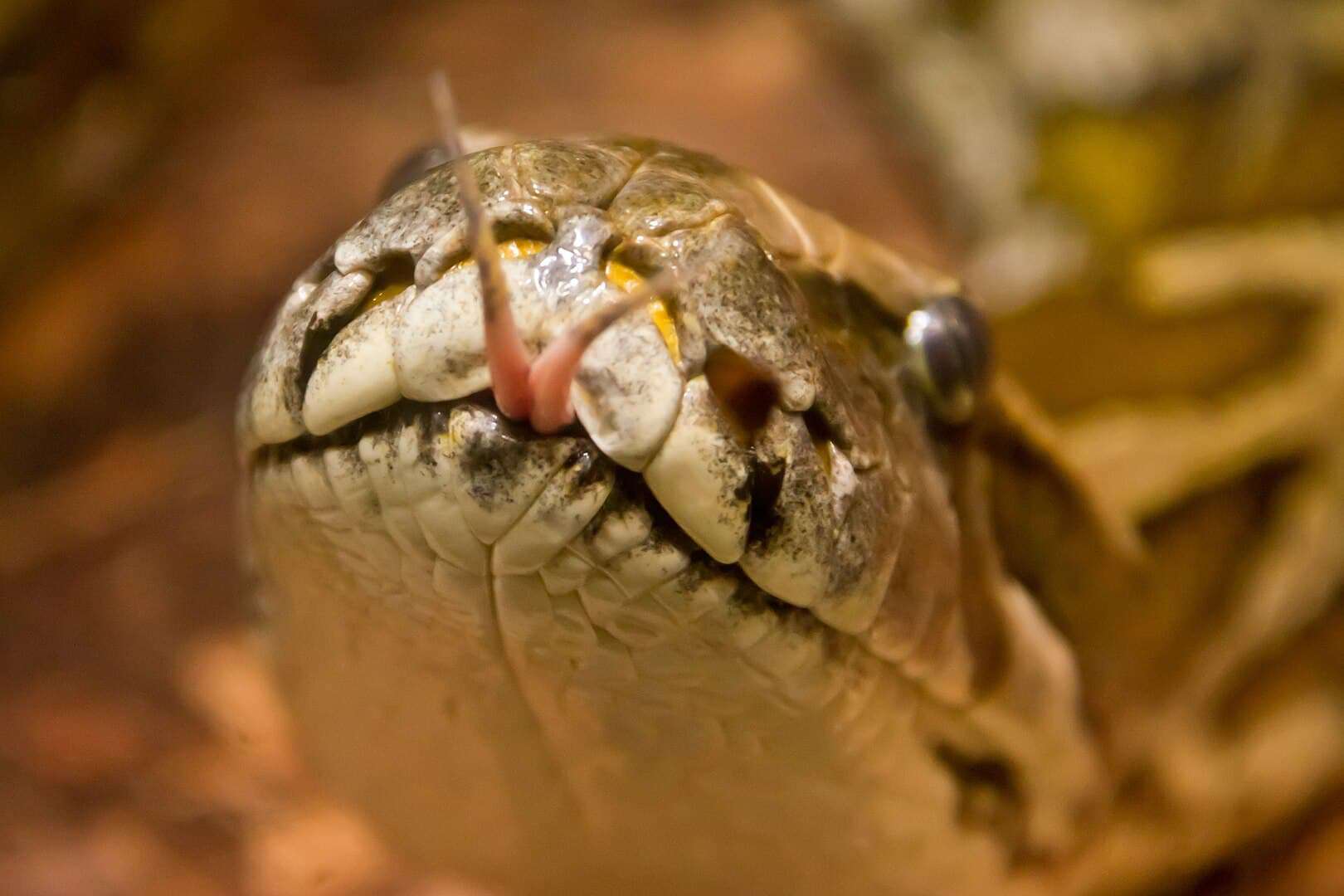
Numerous studies and observations by Everglades National Park personnel indicate significant ecological shifts due to the proliferation of Burmese pythons. These shifts include changes in predator-prey dynamics and overall species abundance.
Python Prey Preferences
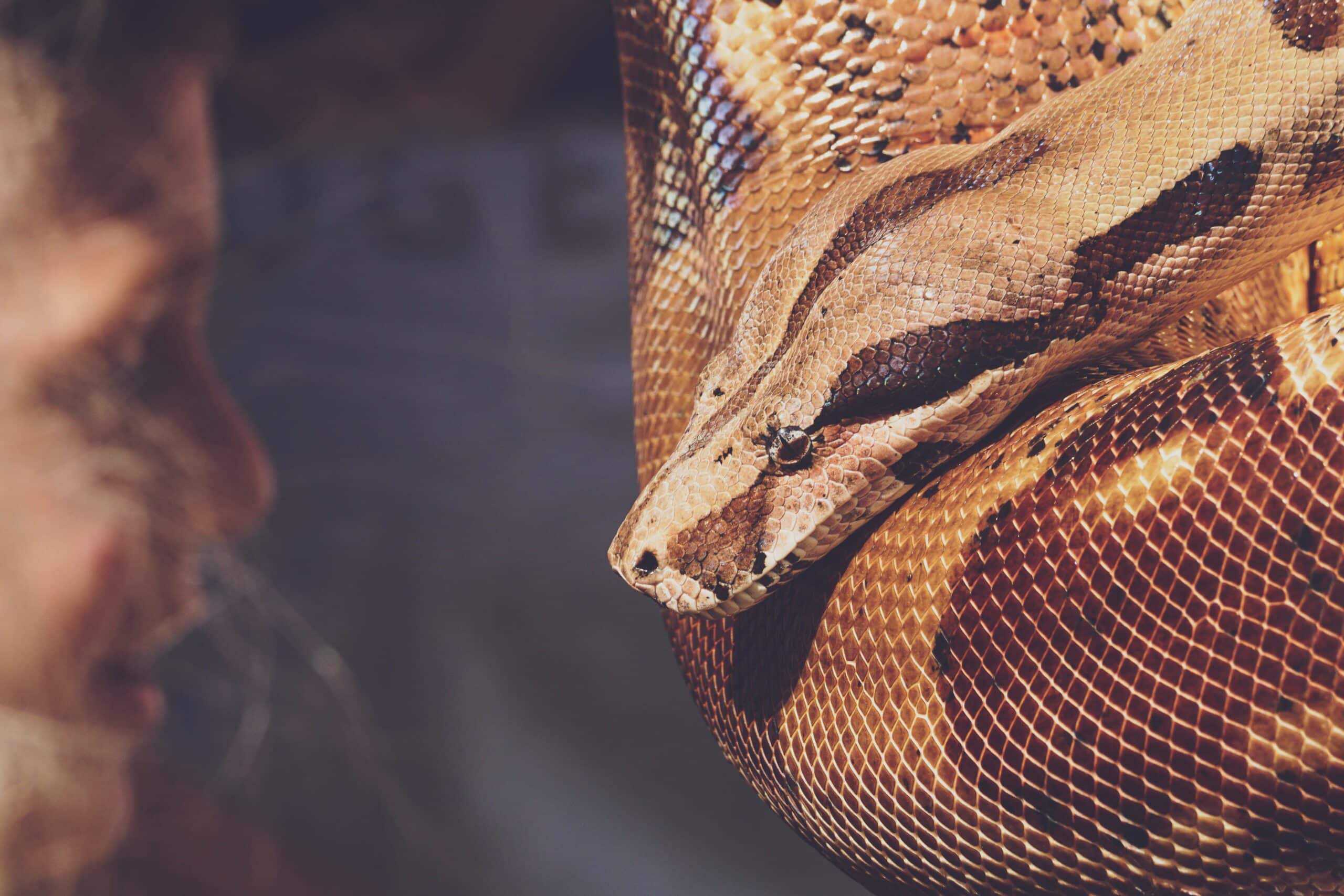
Image by Susanne Jutzeler via Pexels
Burmese pythons are generalist predators, feeding on a wide range of vertebrates. They have been documented preying on over 40 species in the Everglades, including endangered and vulnerable species.
Decline in Native Predators

The decline of native predators such as bobcats and foxes may be partially attributed to competition and direct predation by Burmese pythons. The presence of these large snakes alters the balance of predator-prey relationships in the ecosystem.
Impacts on Ecosystem Dynamics

The introduction of Burmese pythons has led to a reduction in top-down pressure on rodent populations, potentially allowing rodent numbers to increase temporarily. This change could have cascading effects on the entire ecosystem.
Conservation Efforts and Challenges
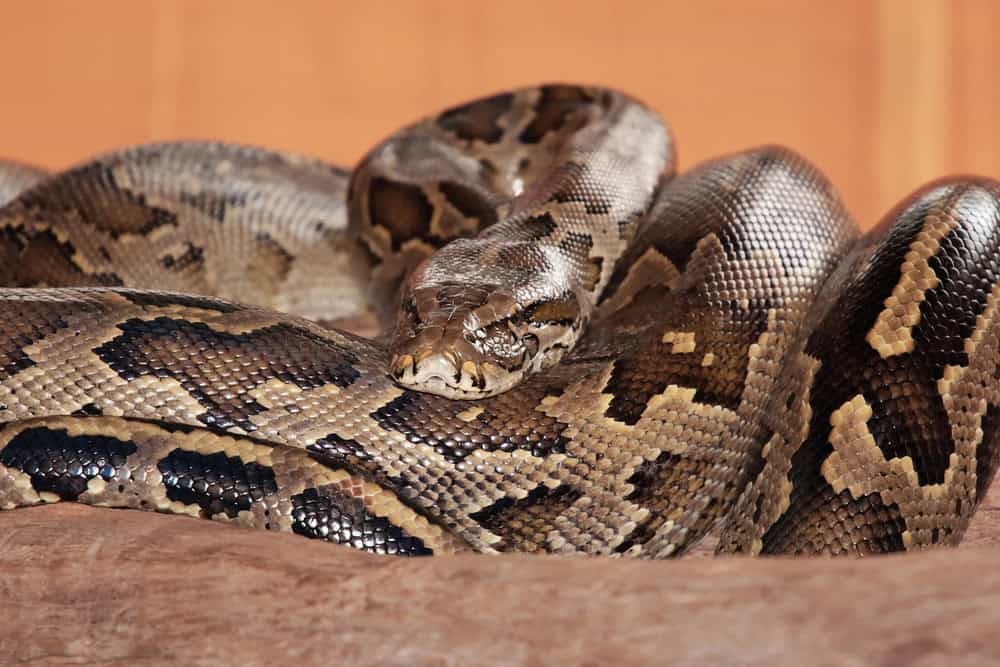
Efforts to control the Burmese python population include import bans and public awareness campaigns. However, the established population and vast range of these snakes present significant challenges for conservationists.
U.S. Government’s Response
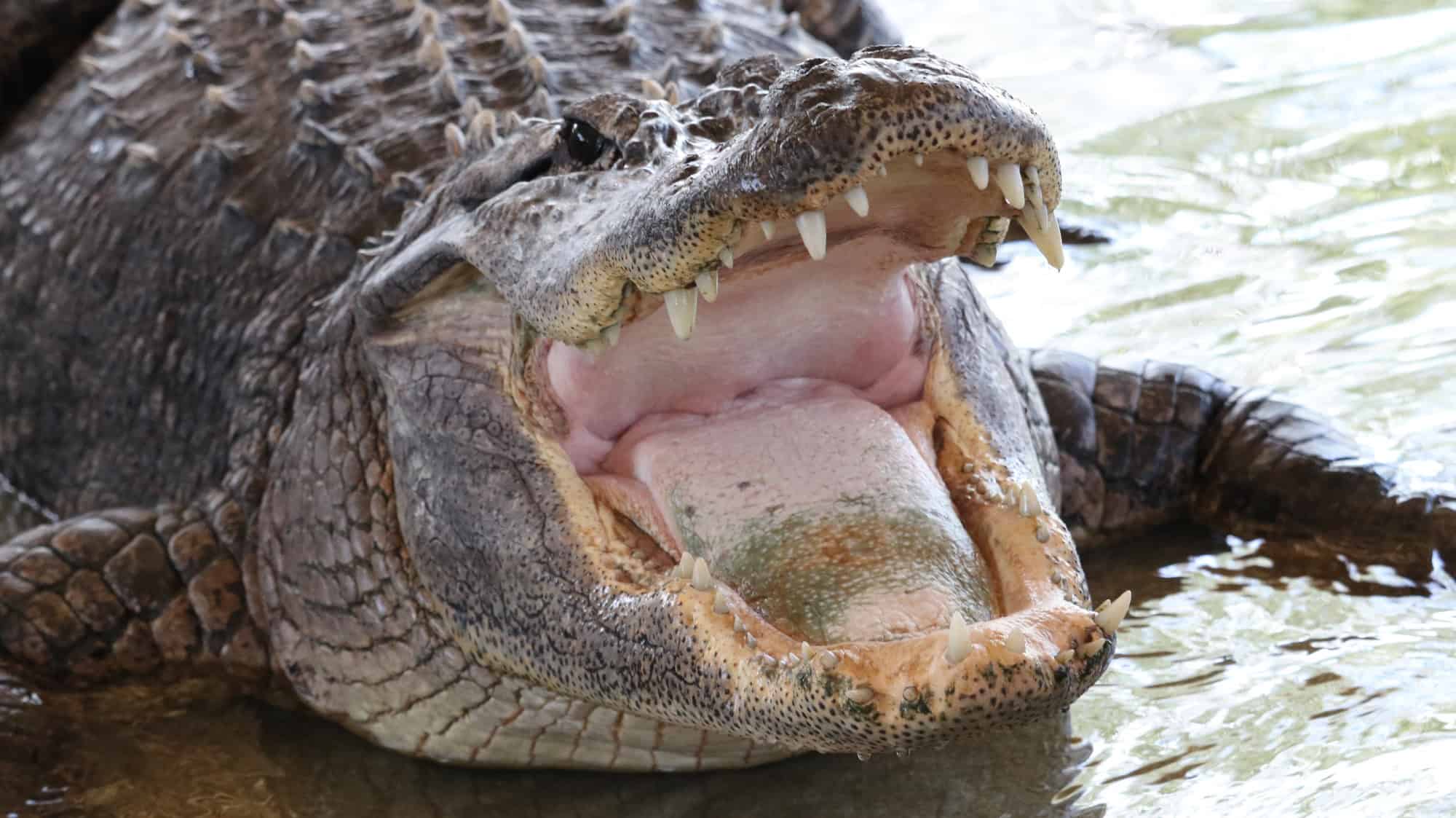
In response to the invasive threat, the U.S. government has banned the importation and interstate sale of Burmese pythons and other large constrictors. These measures aim to prevent further spread and ecological damage.
Research and Monitoring

Ongoing research and monitoring efforts are crucial for understanding the full impact of Burmese pythons in the Everglades. Scientists continue to study their behavior, population dynamics, and effects on native species.
The Role of Public Involvement

Public involvement is essential in managing the Burmese python problem. Initiatives such as Python Challenge hunting competitions and reporting sightings help control the population and raise awareness about the issue.
Future Prospects for the Everglades
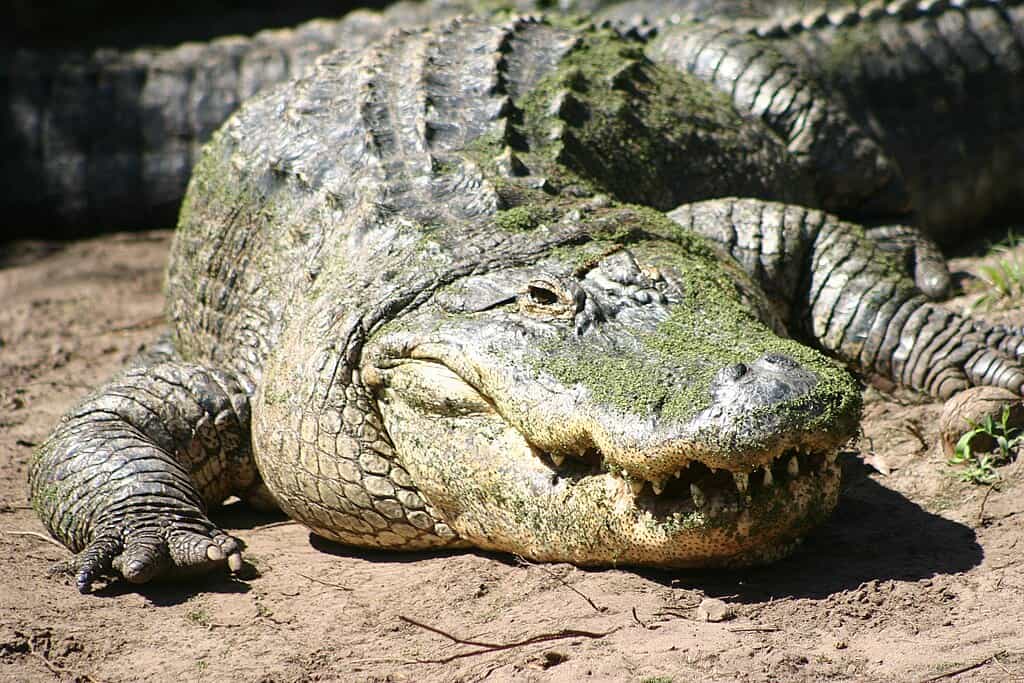
Restoring the Everglades requires a multifaceted approach, including habitat restoration, invasive species management, and ongoing research. Addressing the Burmese python threat is a critical component of these efforts to protect the biodiversity and ecological integrity of the region.
How Did Burmese Pythons Become Invasive in the Everglades?
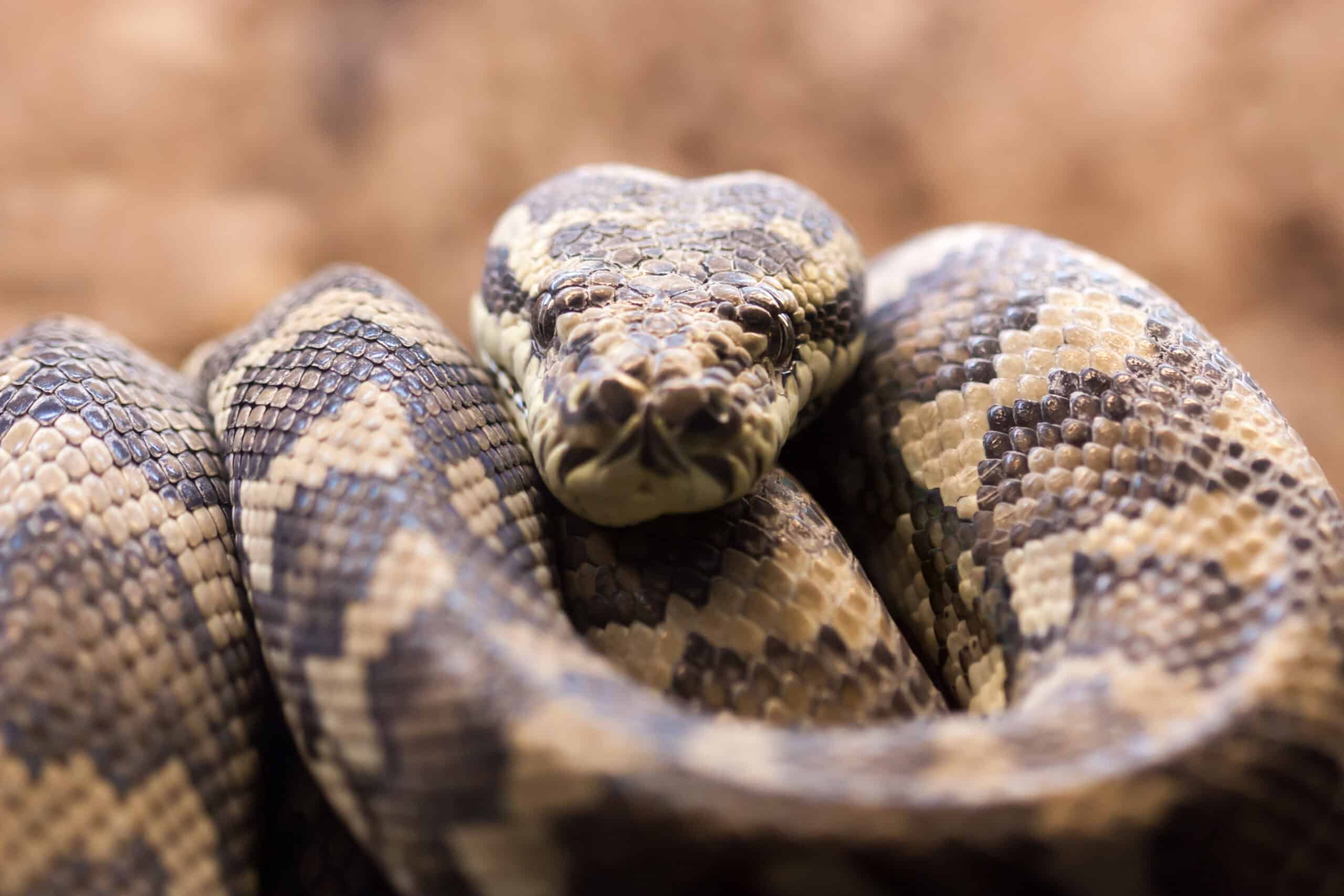
Burmese pythons likely became invasive in the Everglades due to pet owners releasing them into the wild when they became too large to manage. Their adaptability and reproductive success allowed them to establish a significant population.
What Impact Do Burmese Pythons Have on Native Wildlife?

Burmese pythons have a severe impact on native wildlife by preying on a wide range of species, leading to dramatic declines in mammal populations and disrupting the local ecosystem.
How Are Researchers Studying the Effects of Burmese Pythons?
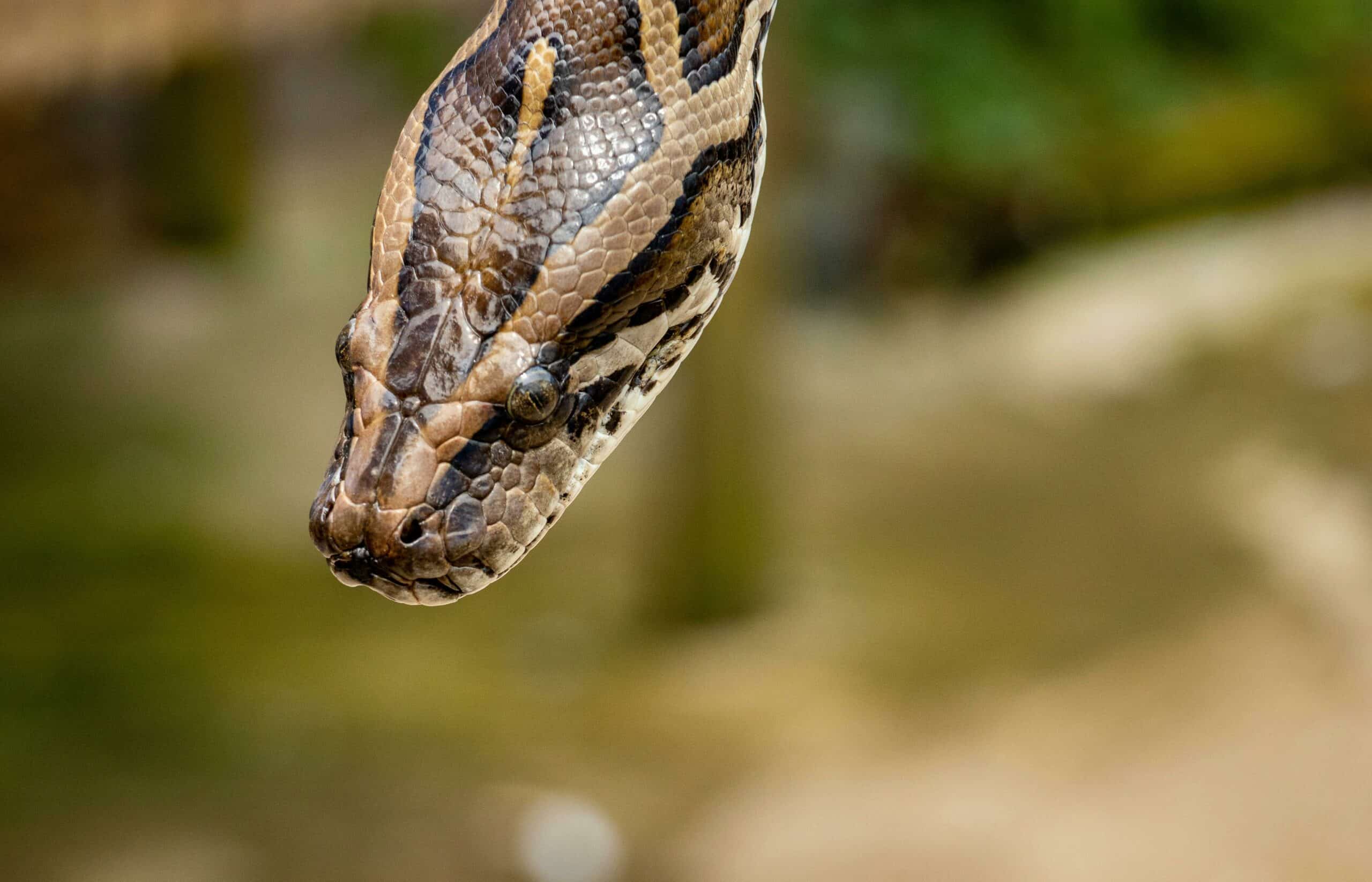
Image by Tomáš Malík https://www.pexels.com/photo/brown-reticulated-python-1660997/
Researchers study the effects of Burmese pythons through field surveys, tracking, and analyzing ecological data to understand their impact on native species and ecosystem dynamics.
What Measures Are Being Taken to Control the Python Population?
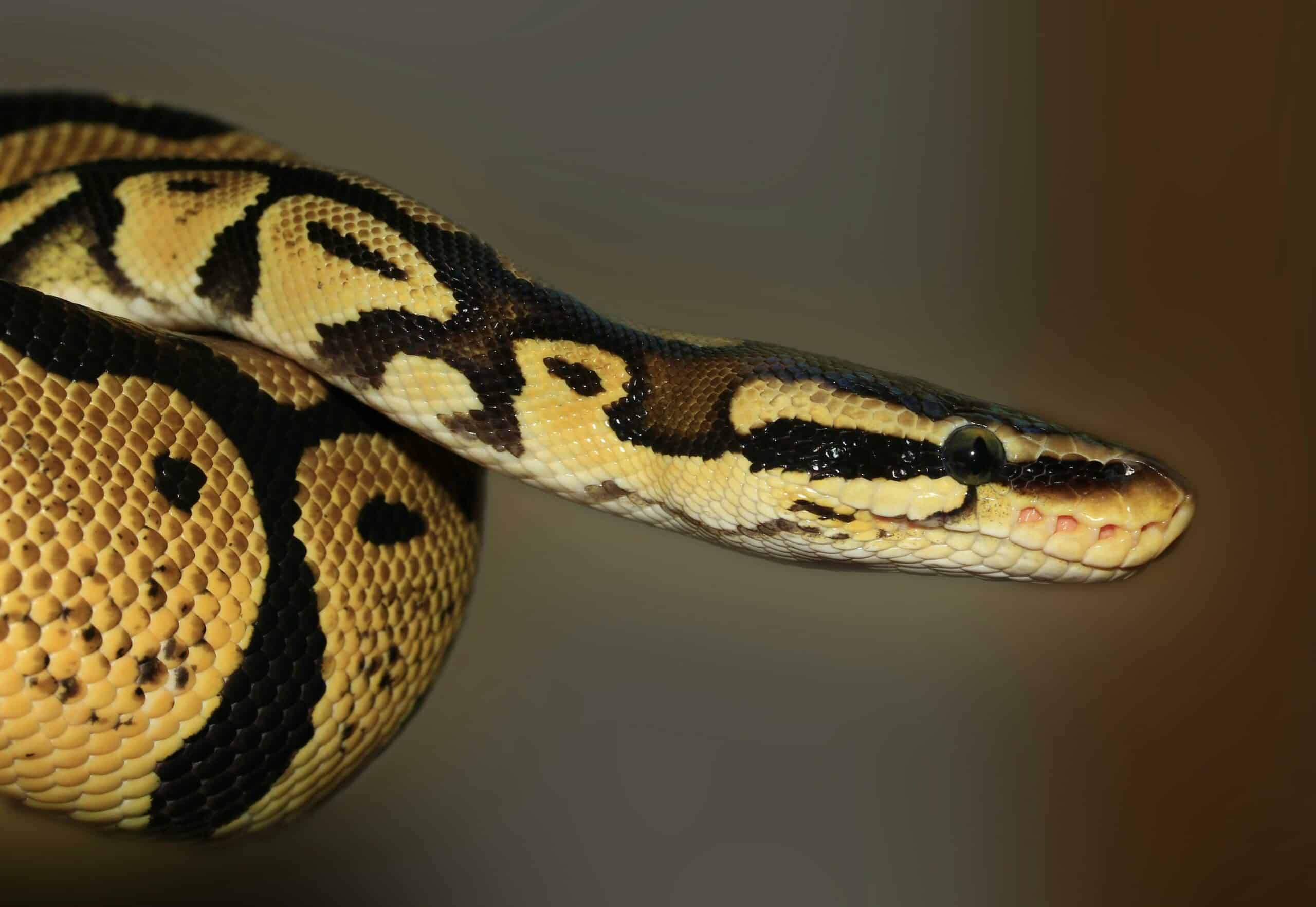
Image via Pixabay
Measures to control the Burmese python population include import bans, public awareness campaigns, hunting competitions, and research into effective removal and management strategies.
Why Is the Predation on Alligators by Pythons Concerning?
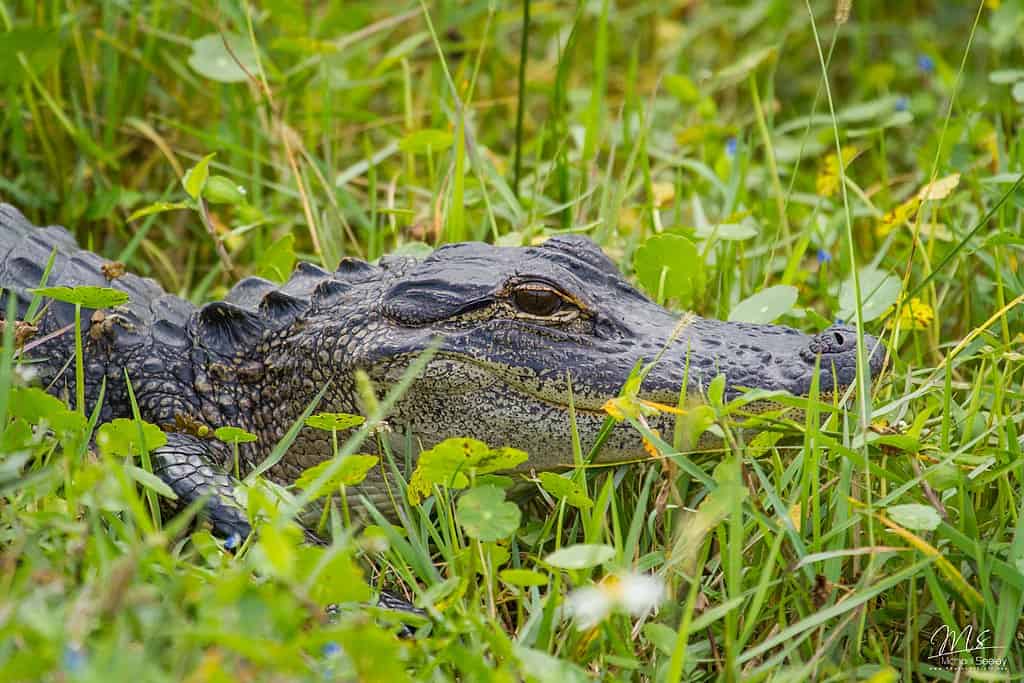
Predation on alligators by Burmese pythons is concerning because it demonstrates the pythons’ ability to prey on large native predators, potentially altering the balance of the Everglades’ ecosystem and threatening the survival of native species.
Next Up:
Girl Started Petting A Massive Crocodile And He Loved It
Largest Freshwater Fish Ever Caught Hooked in Cambodia (661 pounds)
Join our Forum for free today!


